Introduction
I really wanted a counting method where I could work board-by-board. This counting method is clearly inspired from Naccel (Nack Ballard), and the Five-Count (Sho Sengoku; great name by the way), but they don't quite use the full boards, and that always bothered me. The method also draws inspiration from the Half-Crossover (Douglas Zare), but it uses full boards (only four numbers to add) rather than half-boards (eight numbers).
It is based on:
- the multiplication by 5, which is trivial (for the maths-impaired: multiply by 10, then divide by 2 :-)
- making an approximate trivial count, then making small count adjustments
- working board by board; actually staying inside each 6-points board, no shifting, no distortion; this hopefully limits errors through the cleaner visualization (it does for me anyway)
- NB: this is at the expense of a little more count adjustment; however this is usually mitigated by the symmetry
considerations found in many counting methods
The Method
1. Count men in each board and use appropriate weighting factors before adding up.
I prefer to start from the furthest board, but this is a matter of taste.
- bar (don't forget): counted men × 5
- opponent infield: counted men × 4
- opponent outfield: counted men × 3
- own outfield: counted men × 2
- own infield: counted men × 1
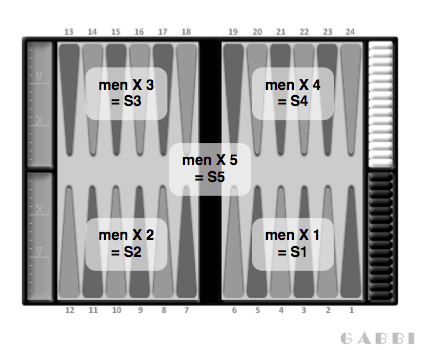
2. Add all up, multiply by 5.
This is your approximate count = (S1 + S2 + S3 + S4 + S5) × 5.
3. Make count adjustments.
Use the "5-points" as reference in each board:
- own infield: 5-point
- own outfield: 10-point
- opponent outfield: 15-point
- opponent infield: 20-point
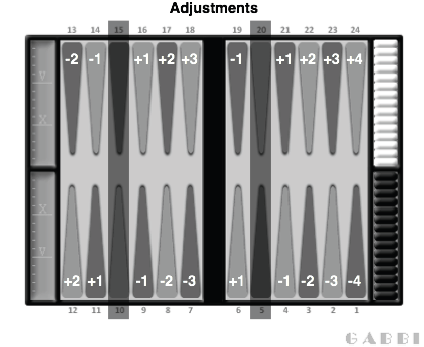
Make count adjustments in each board:
- Add pips for men trailing the reference 5-point.
- Substract pips for men ahead of the reference 5-point.
- NB1: Use symmetry around the reference 5-point inside a board to remove the need for some count adjustments.
- NB2: Use symmetry across the board to remove the need for some count adjustments (in particular across outfields).
- NB3: The bar is your 25-point, and is only one point, so no count adjustment there, obviously.
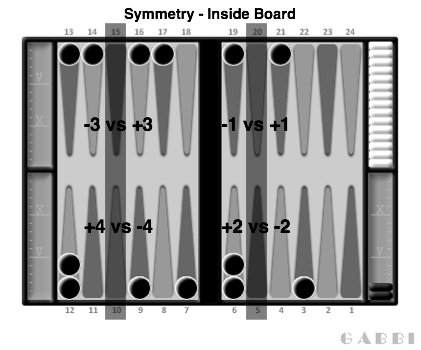 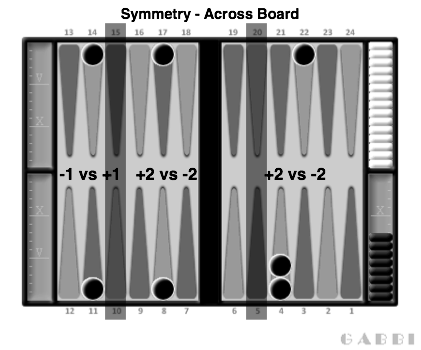
Board-specific issues.
Opponent infield:
- the reference point (20-point) is lopsided (not near middle of board)
- this (statistically) requires more count adjustments
- not a real issue since there are usually very few men in this board
Opponent outfield:
- the reference point (15-point) is more central (not perfect)
- this (statistically) means simpler count adjustments
- it is sometimes possible to cancel the need for some count adjustments by symmetry inside the board
- it is often possible to cancel the need for some count adjustments by symmetry with own outfield
Own outfield:
- the reference point (10-point) is more central (not perfect)
- this (statistically) means simpler count adjustments
- it is often possible to cancel the need for some count adjustments by symmetry inside the board
- it is often possible to cancel the need for some count adjustments by symmetry with opponent outfield
Own infield:
- the reference point (5-point) is lopsided (not near middle of board)
- this (statistically) requires more count adjustments
- this is somewhat an issue since there are usually many men in this board
- this is really an issue later in games when more men move in, and move deeper and deeper in (away from the
reference 5-point)
- however there are better ways to count such late positions (e.g., my own Sweet-Fifteen :-)
Do not worry about men already off: they count for 0 each.
And let's not forget: it is quite easy to forget men on the bar. If you did, just add 25 pips each at the end ...
Examples
Example 1.
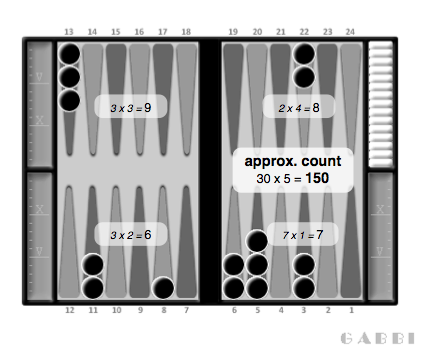 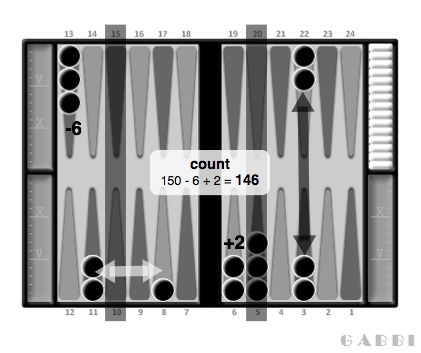
Example 2.
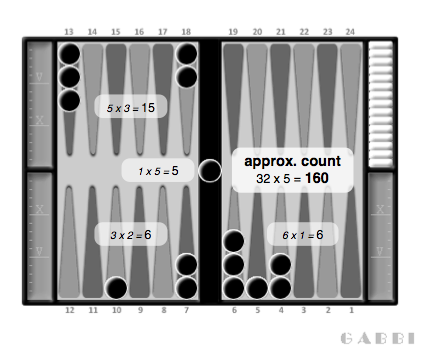 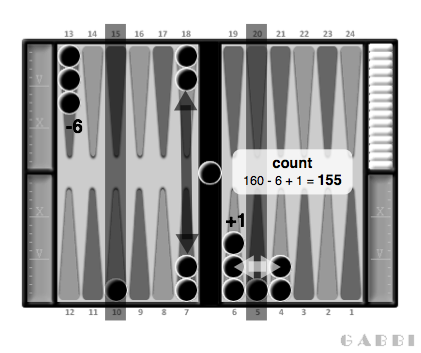
Example 3.
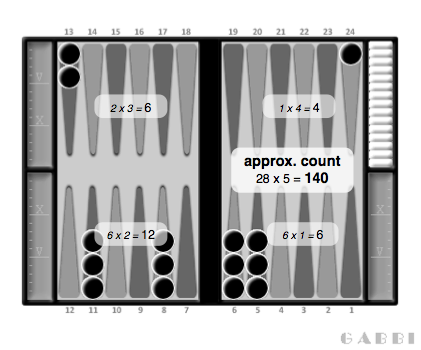 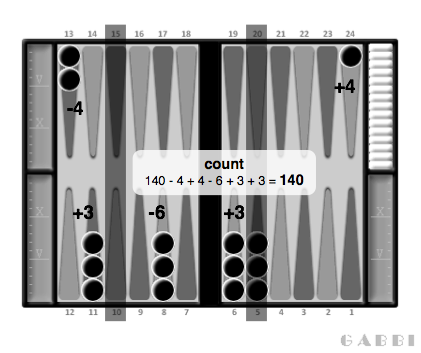
Illustration boards made with GABBI (Simon Woodhead) at http://www.backgammonaustralia.org/gabbi.php.
|



![]()
